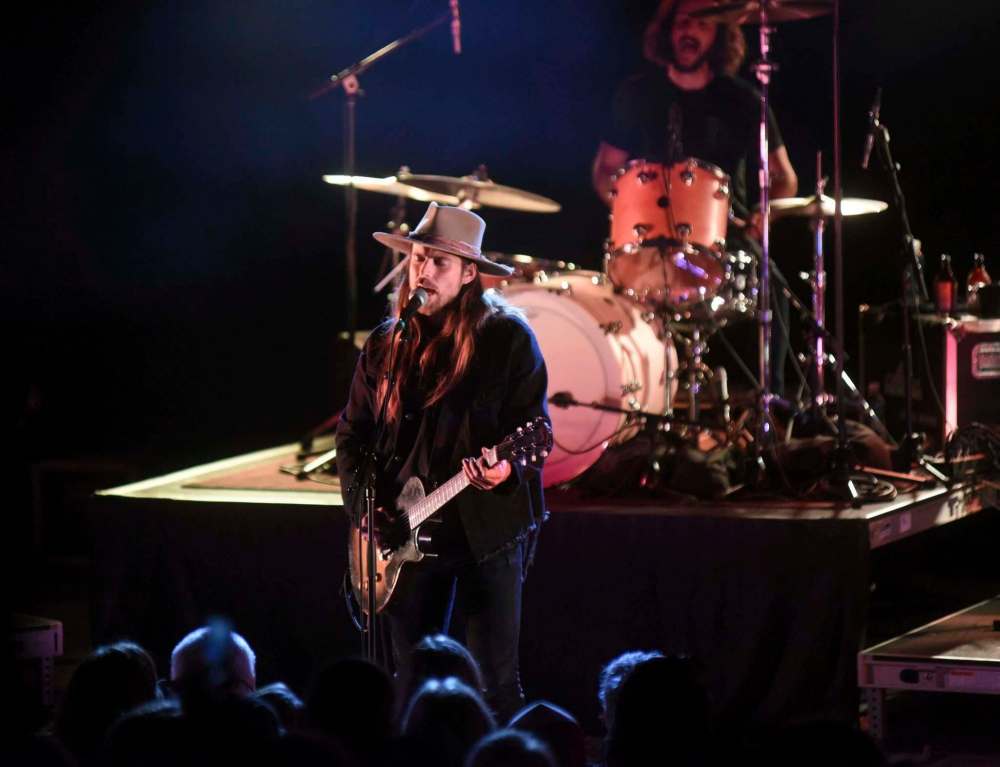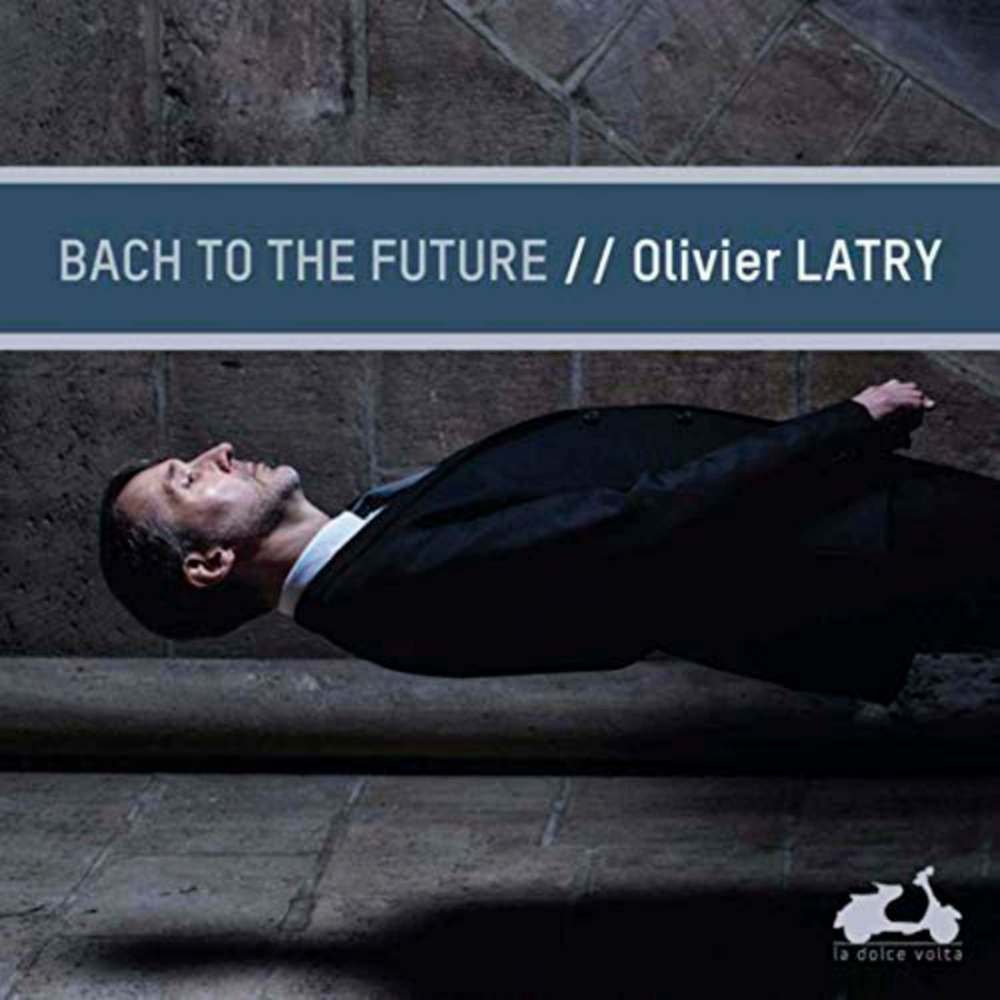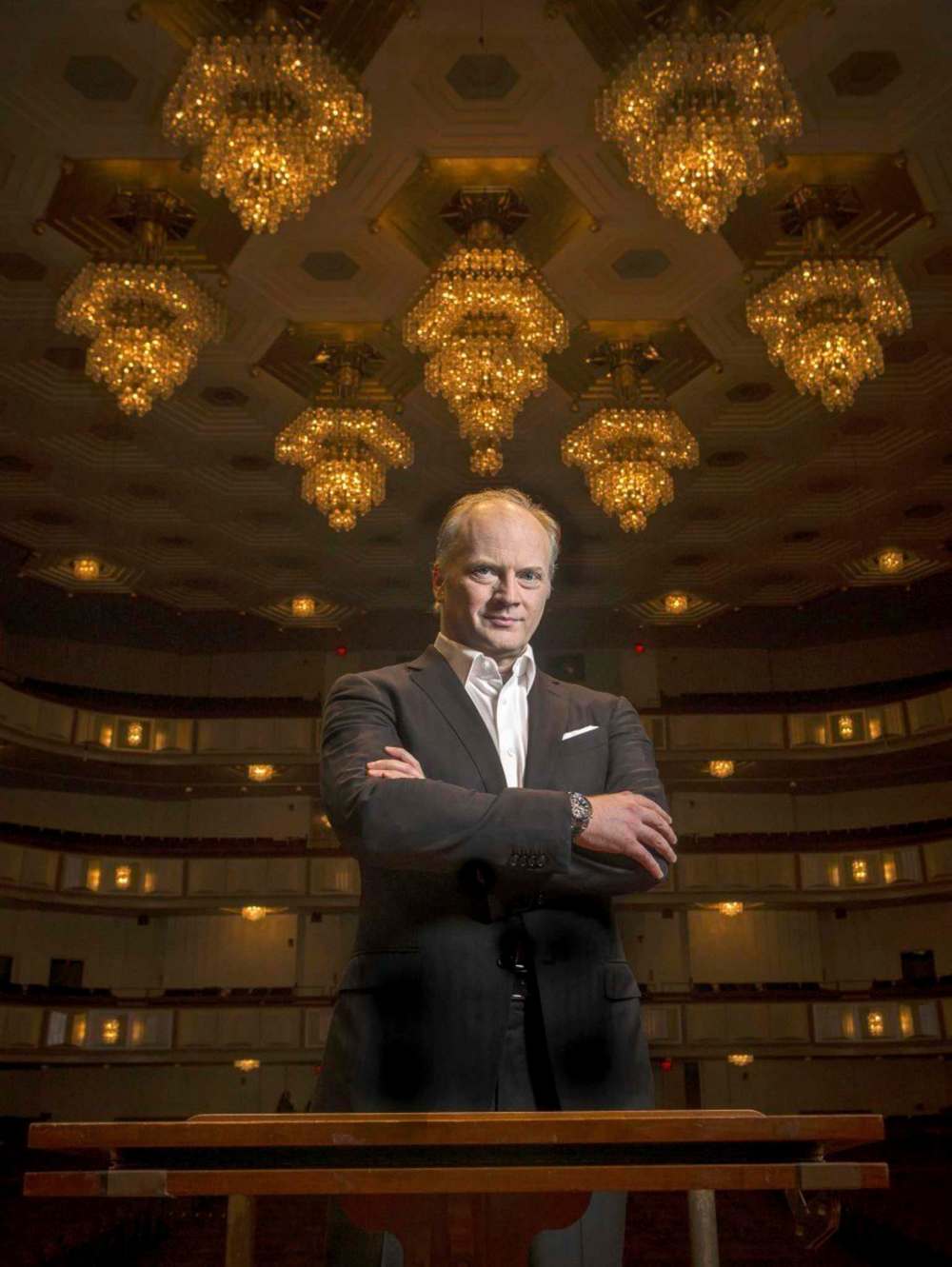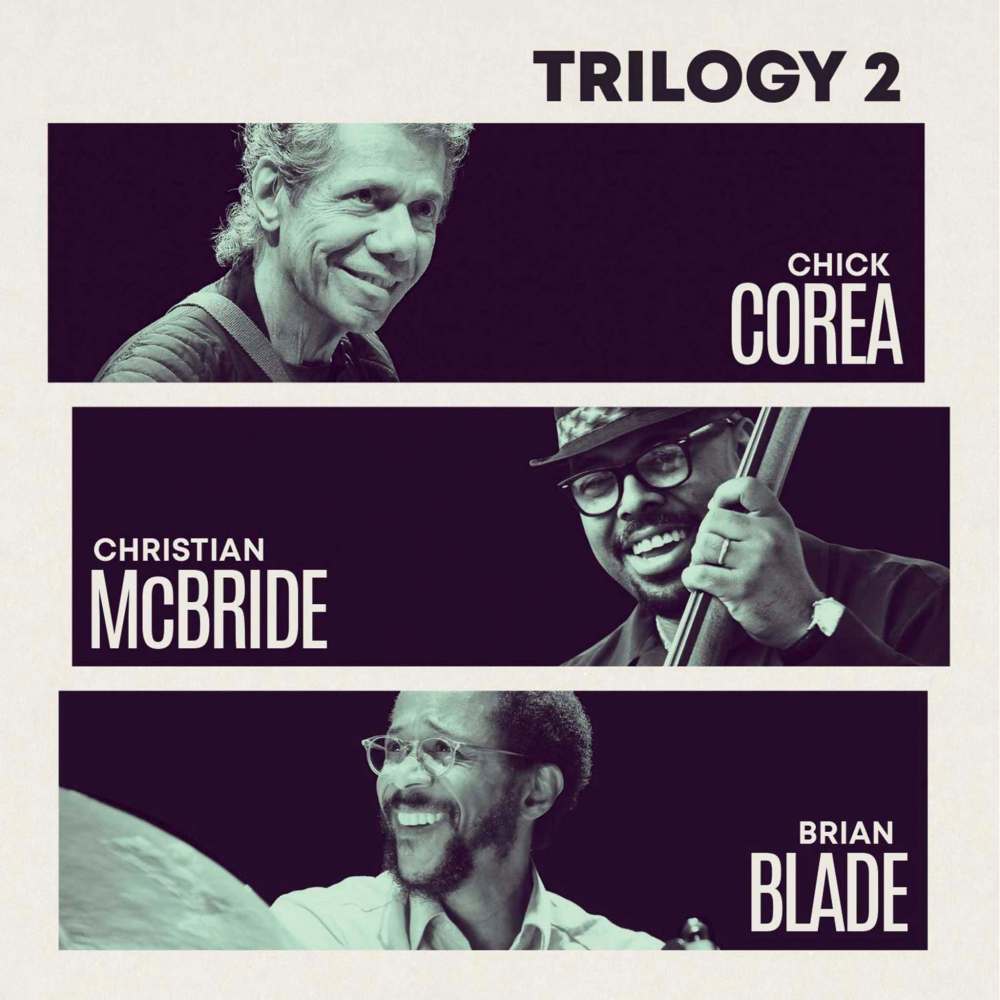The best in rock, roots, jazz, classical and all the rest
Fearless reviewers pick their favourite albums of the decade and 2019
Advertisement
Read this article for free:
or
Already have an account? Log in here »
To continue reading, please subscribe:
Monthly Digital Subscription
$0 for the first 4 weeks*
- Enjoy unlimited reading on winnipegfreepress.com
- Read the E-Edition, our digital replica newspaper
- Access News Break, our award-winning app
- Play interactive puzzles
*No charge for 4 weeks then price increases to the regular rate of $19.00 plus GST every four weeks. Offer available to new and qualified returning subscribers only. Cancel any time.
Monthly Digital Subscription
$4.75/week*
- Enjoy unlimited reading on winnipegfreepress.com
- Read the E-Edition, our digital replica newspaper
- Access News Break, our award-winning app
- Play interactive puzzles
*Billed as $19 plus GST every four weeks. Cancel any time.
To continue reading, please subscribe:
Add Free Press access to your Brandon Sun subscription for only an additional
$1 for the first 4 weeks*
*Your next subscription payment will increase by $1.00 and you will be charged $16.99 plus GST for four weeks. After four weeks, your payment will increase to $23.99 plus GST every four weeks.
Read unlimited articles for free today:
or
Already have an account? Log in here »
Hey there, time traveller!
This article was published 18/12/2019 (2193 days ago), so information in it may no longer be current.
The best of the decade
Jeff Monk
Your Future Our Clutter, The Fall (2010) — Arguably one of the last great Fall albums before the death of leader Mark E. Smith in early 2018. YFOC is chock full of the kind of blistering aural bombast that endeared this influential band to so many over the course of its nearly four-decade career.
Pull Up Some Dust and Sit Down, Ry Cooder (2011) — American singer-songwriter Ry Cooder has his way with wading into politics during the George W. Bush era and makes some convincing points on tracks such as No Banker Left Behind. As always, his playing and compositions are flawless and fun to listen to.

Locked Down, Dr. John (2012) — Working with Black Keys guitarist Dan Auerbach as producer, legendary New Orleans piano professor Mac Rebennack created a swirling, mysterious and funky set of tracks that ooze swampy legitimacy.
Taking No Prisoners (with Gypie 1977-1981), Dr. Feelgood (2013) — A multi-disc compilation that perfectly highlights a band (including hot-shot guitarist Gypie Mayo) that defined U.K. pub-rock style for a generation.
Divide and Exit, Sleaford Mods (2014) — Nottingham, England’s “punk-hop” duo tears a hefty piece from contemporary music’s bloated carcass. Sample this lyric from Tied Up in Nottz: “The smell of p— is so strong it smells like decent bacon” and you get the idea.
The Monsanto Years, Neil Young + Promise Of The Real (2015) — Young, along with a crew of much younger players that include two of Willie Nelson’s sons, rock and rail against genetically modified seed use and its effect on the food chain. Shakey releases a lot of albums. Don’t ignore this one.
Post Pop Depression, Iggy Pop (2016) — For his 17th solo album, Pop hearkens back to the timeless era of stellar sets like The Idiot and Lust for Life, yet doesn’t rely on any past-their-due-date, elder-statesman clichés. Using younger guns like Josh Homme of Queens of the Stone Age helped deliver Pop’s music to new set of fans.
Trouble No More — The Bootleg Series Vol. 13 (1979-1981), Bob Dylan (2017) — Thirty live tracks culled from His Bobness’s tours promoting his three gospel albums — Slow Train Coming, Saved and Shot Of Love. The band is faultless; Dylan is on fire and the complete package is a worthy addition to any collection.
The Ice Queen, Sue Foley (2018) — Ottawa-born guitarist-songwriter Sue Foley delivers a career high point album with these tracks. Her guitar playing, band and songs are all on fire here.

Turn Off The News (Build A Garden), Lukas Nelson & Promise Of The Real (2019) — They may be hippies and even hipsters, but Nelson and company continue to tour hard behind this wonderful set of songs. A sweet mix of country, folk and rock that is destined to be influential in the coming years.
Bonus: Concert moment of the decade: Jeff Beck, Live at Pantages Playhouse (Oct. 22, 2011) — Witnessing the guitar master in full flow in our dear old ’Peg City was worth the price of admission and then some. Authoritative and yet so sublime.
John Kendle
David Comes to Life, F***ed Up (2011) — Can a Canadian punk band with a hardcore singer make a full-length rock opera about finding romance amid the darkness of post-apocalyptic industrial alienation? Sure it can, and it can be nominated for the Polaris Prize, too.
Everybody Down, Kate Tempest (2014) — Tempest is a British spoken-word artist-rapper with a working-class accent and a first-rate eye for the details and nuances of interactions and emotions. Her first full-length album was a series of vignettes that told a linear story but also stood on their own as vital, literate breaths of fresh air.
The Firewatcher’s Daughter, Brandi Carlile (2015) — Yeah, she swept the Grammys in 2019, but Carlile’s mid-decade record was full of great songs that fully showcased the plaintive emotion of her writing, her astonishing voice and her telepathic harmonic interplay with bandmates Tim and Phil Hanseroth.
To Pimp a Butterfly, Kendrick Lamar (2015) — The third album from an L.A. rapper whose pulsingly primal work caught the imaginations of kids around the world. Did Kendrick’s broader message about the black American experience take hold? Not politically… not yet, at least. But it should.

Blackstar, David Bowie (2016) — Bowie hid his cancer diagnosis and failing health from the world, and this album was dropped just two days before his death from liver cancer. Recorded with the jazz quintet of New York saxophonist Donny McCaslin, Blackstar became coda to a magnificent career while also a wonderful comment on life, art and death. Did he know it would? Of course he did.
Midwest Farmer’s Daughter, Margo Price (2016): This record’s opening cut, Hands of Time, is a semi-autobiographical six-minute epic that tells you just about everything you need to know about Price, her life’s journey and her expressive take on soulful honky-tonk pickin’ and singin’. The rest of the album will have you rooting for her to succeed (she has) and hoping that she has much more in store (she does).
Man Machine Poem, The Tragically Hip (2016) — On May 24, 2016, the Tragically Hip announced that singer Gord Downie had been diagnosed with terminal brain cancer but that the group had a new album (its 13th) ready to go and would embark on a cross-country tour that summer. Written and recorded before Downie fell ill, Man Machine Poem arrived in June and marked the group’s best work in years because, in choosing to work with producers and sound makers Kevin Drew (Broken Social Scene) and Dave Hamelin (the Stills), the Hip was willing to get out of its comfort zone and let these songs squawk and skronk and howl.
The Nashville Sound, Jason Isbell and the 400 Unit (2017) — Isbell is one of the best American singer-songwriters working, and this album is his masterpiece to date — an album full of rockers and weepers that capture all the fear and longing and loving that come with life’s beautiful mix of introspection and exuberance. If We Were Vampires gets my vote for best love song of the decade (and most others, too).

Masseduction, St. Vincent (2017) — Annie Clark became a star with her 2014 self-titled record and Masseduction found St. Vincent toying with the notion of being a pop star while retaining her artistry and reflecting on the trajectory of her life. If that sounds complex, it is — but Clark pulls it off, turning Masseduction into a snapshot of a life constantly in motion, while lamenting and regretting life’s inexorable march forward.
Dirty Computer, Janelle Monáe (2018) — On which Monáe gave up on the storyline of Cindi Mayweather and instead embraced her inner Prince devotee. Much of this album was written with the Purple One before his death in 2016 and its release confirmed that, if anyone has the chops and the charisma to be his heir apparent, it’s Janelle.
Keith Black
These 12 albums reflect styles from the groundbreaking trio EST to David Virelles’ redefining Latin jazz, pianist Fred Hersch, arguably the best large ensemble in the business with Maria Schneider, symphonic crossover with Marius Neset and the London Sinfonietta and a new release of classic Miles Davis with John Coltrane. The Canadian samples have the same range and are but a tiny portion of our vibrant jazz community.
Mbókò, David Virelles (2013) — The new face of Latin jazz.
301, EST (2012) — One of several albums I could have chosen from this amazing trio.
Live In Europe, Fred Hersch (2018) — From near death to incredible creativity, we all give thanks for the gift of Fred Hersch.
The Thompson Fields, Maria Schneider (2017) — Schneider is not only at the top of the large ensemble world, she has inspired other bands to pull the whole genre ahead.

Circle Of Chimes, Marius Neset with the London Sinfonietta (2019) — “Crossover” is becoming an irrelevant word in jazz. This blend of small jazz group and orchestra moves the needle, as they say.
The Last Tour (2018 rec 1960) Miles Davis/John Coltrane (2018) — Interesting from a historical perspective but also because it is pretty wonderful jazz.
Canadian albums of the decade:
Infinitude, Christine Jensen and Ingrid Jensen (2017) — The first album co-led by these great sisters, and assisted wonderfully by guitarist Ben Monder.
Rev, Ernesto Cervini (2017) — Drummer Cervini anchors a lot of Canadian jazz, but this album is one of many that truly caught my ear.
You Have Options, Francois Houle (2018) — Vancouver-based clarinettist Houle has a tone and musical vitality that is endlessly captivating.
Nudging Forever, Mike Janzen (2015) — Another “crossover” album with Manitoba pianist and composer Janzen teaming with the TSO to produce an album of true beauty.
Old Soul, Robi Botos (2018) — When Canada agreed to allow Hungarian-born pianist Botos to move here, we gained a musician of the highest order.
Path Of Totality, Quinsin Nachoff (2018) — Canadian saxophonist’s album here gets better and more complex with each listen; jazz to satisfy the fussiest fan.
Holly Harris
Bach to the Future, Olivier Latry, Cavaillé-Coll Organ of Notre-Dame de Paris (2019) — This eerily prophetic album records for posterity the last recital performed on the 1868 Cavaillé-Coll pipe organ in Paris’s historic Notre-Dame de Paris cathedral prior to the devastating fire of April 2019. It also serves as a testament to the power of live recording that preserves moments in time for generations to come. French musician Olivier Latry, who began his tenure as one of the cathedral’s longtime organists in 1985, performs an all-Bach program of 10 works on the massive instrument that survived relatively unscathed.
Bye Bye Berlin, Marion Rampal/Quatuor Manfred (2018) — French chanteuse Marion Rampal channels the spirit of legendary German cabaret singers Lotte Lenye and Marlene Dietrich with this Weimar Republic-era inspired music that remains as raw and alive as it did when the world danced on the brink of madness. Rampal holds nothing back with famous Kurt Weill songs such as Youkali, Mack the Knife and Barbara-Song, given fresh harmonic and stylistic twists by the Quatuor Manfred string quartet and saxophonist/bass clarinettist Raphael Imbert.
Messiaen: Quatuor pour la fin du Temps, Raphaël Sévère & Trio Messiaen (2018) — Trio Messiaen, with French clarinettist Raphaël Sévère, breathes new life into composer Olivier Messiaen’s Quatuor pour la fin du Temps, which was written during the composer’s captivity at a Nazi prisoner-of-war camp. It continues to resonate with apocalyptic overtones.
Angela Hewitt, Mozart Piano Concertos No. 6, K238, No. 8, K246 & No. 9, 271 (2011) — Canada’s grande dame of piano, who has garnered worldwide fame for her performances of J.S. Bach, is equally at home with the sublime music of Mozart, in this 2011 recording showcasing her pristine artistry in three of his piano concertos, proving again why this national treasure is regarded one of the top living pianists in the world today.
Ravel: L’enfant et les sortileges, Sheherazade, Seiji Ozawa (2015) — There’s something profoundly moving about marking your 80th birthday with a children’s opera. Legendary Japanese conductor Seija Ozawa leads the Saito Kinen Orchestra and mezzo-sopranos Isabel Leonard and Susan Graham in this live recording, which celebrates the maestro’s return to the podium after surviving a life-threatening cancer diagnosis in 2013.
James Ehnes, The Four Seasons (2015) — Brandon’s pride tackles Vivaldi’s The Four Seasons, remarkably for his first time, while also leading Australia’s Sydney Symphony in this album. Renowned for his compelling performances of 19th- and 20th-century repertoire, the violinist brings his sterling artistry to the “Red Priest’s” four iconic violin concerti, as well as Tartini’s diabolical Violin Sonata in G minor, like a man possessed.
Glenn Gould, This is Glenn Gould: Story of a Genius (2014) — This comprehensive two-CD set including a remarkable, 192-page archival booklet that captures the essence of one of Canada’s greatest musical icons. Gould wrote his own rules as a recording artist with his seminal 1955 release of J.S. Bach’s Goldberg Variations. Sixty years later, it remains the gold standard by which all other performances are judged.
Anna Netrebko, Verismo (2016) — After a recording hiatus of three years, Russian powerhouse Anna Netrebko returned with a vengeance in 2016 with a new set of 16 arias by Puccini, Leoncavallo, Ponchielli, Boito, Giordano and Catalani. Hailed as one of her generation’s most revered sopranos, Netrebko’s dramatic vocals bring full-throttle emotionalism to these “realistic style” works, joined by Accademia di Santa Cecilia Orchestra and Chorus.
Steve Reich: Double Sextet. Radio Rewrite (2016) — Minimalist pioneer Steve Reich also celebrated his 80th milestone birthday with this recording, featuring two of his driving string ensemble works performed by Ensemble Signal led by Brad Lubman. It includes his 2009 Pulitzer Prize-winning Double Sextet, and Radio Rewrite, which was inspired by two songs by British rockers Radiohead.
In 27 Pieces: The Hilary Hahn Encores (2013) — There are a few extra-special violinists in the world and Hilary Hahn is one of them, known equally for her dazzling bravura as well as her thirst for adventure. This appealing disc features 27 short encore pieces the American-born artist commissioned back in 2013, featuring a trophy case of contemporary composers including David Lang, Jennifer Higdon and Nico Muhly. It also showcases the violinist’s versatility, with the wide range of pieces spanning David del Tredici’s neo-Romantic Farewell, to Mason Bates’ hoedown-inspired Ford’s Farm.
The best of 2019
Jeff Monk
1. Rainford, Lee (Scratch) Perry — The mighty Upsetter himself returns to brilliant form with long serving U.K. cohort producer and mate Adrian Sherwood and makes roots reggae magic like it’s 1974. Praise Jah.
2. Drift Code, Rustin Man — Slightly unconventional former Talk Talk man Paul Webb is a hip creative force as Rustin Man. This sophisticated listening experience is both passionate, intense and somewhat lysergic in its delivery.

3. Three Chords and The Truth, Van Morrison — While this master of musical shape-shifting is never too far from a studio or venue, this album has him and his potent combo sounding utterly revitalized. The Belfast Lion is 74 and sounding half that age.
4. Turn Off The News (Build A Garden), Lukas Nelson & Promise Of The Real — Willie’s boy and his crack band are relentless in their willingness to keep the flames of positivity and love alive in these dark political times. There is truly something here for any music fan.
5. Pony, Orville Peck — Every Canadian lad’s cowboy crush pushes the boundaries of country music to be so much more inclusive. He even made it to the pages of Vogue.
John Kendle
Magdalene, FKA twigs — On Magdalene, twigs proves that her classically trained voice is equally adept at handling the requirements of R&B and trip-hop (mirrored heart, holy terrain), angry electronica (fallen alien) and the otherworldly ethereal, falsetto/soprano of Kate Bush (traces of which are littered everywhere). Simply put, it’s a tour de force.
Remind Me Tomorrow, Sharon Van Etten — In choosing to work with producer John Congleton, Van Etten signalled her intent for Remind Me Tomorrow, and the album’s icy beats and beeping, squawking new-wave synths confirmed that the record would be leaps and bounds removed from the spare, guitar-and-vocals-based indie-folk/alt-country of her first efforts.
When We All Fall Asleep, Where Do We Go?, Billie Eilish — Eilish is the pop darling of the moment and, on the basis of her debut album — a rich pastiche of electronic pop, trap, hip hop, dubstep and acoustic and piano-based melodies — the hype is also clearly warranted. Darker explorations of Eilish’s fears and her experiential desires populate songs such as the pulsing bad guy, the breathy xanny and the quasi-banging bury a friend.
Sound & Fury, Sturgill Simpson — A lot has been made of the fact that Simpson’s new album embraces loud squalls of distorted rock guitar, thumping, bass-heavy beats and ethereal, outlandishly distorted synthesizer swirls (and that it’s also the soundtrack for an anime movie). If there’s a statement of purpose on this record, it’s in Make Art Not Friends, which opens with two minutes of synthesizer atmospherics and later offers a clue at Simpson’s motivation: “This town’s getting crowded, truth’s been shrouded, I think it’s to change up the sound.”
Dogrel, Fontaines D.C. — Dogrel is one of those albums that sees a band emerge as a jolt to the system that will cause casual listeners to sit up a little straighter and pay close attention. The intensity of the quintet’s Strokes-meets-Velvets-meets-the Fall sound makes for an invigorating sonic balm and singer Grian Chatten isn’t a crooner as much as he is a MacGowan/Behan/Chevron-infused poet who recites in a Guinness-thick Dublin accent over razor-sharp rock ’n’ roll.
Holly Harris
1. Bach to the Future, Olivier Latry, Cavaillé-Coll Organ of Notre-Dame de Paris — Like a ghostly phoenix rising from the ashes — in this case, the devastation wreaked by last April’s fire at the historic Notre-Dame de Paris cathedral — this extraordinary recording features the last recital performed on its 1868 Cavaillé-Coll pipe organ by one of the church’s head organists, Olivier Latry. He performs an all-Bach program of 10 works on the massive instrument that survived the fire relatively unscathed, with a powerful Easter chorale: Herzlich tut mich verlangen BWV 727 beckoning with the promise of hope and resurrection from the darkest shadows of despair.
2. Mahler — Symphony No.1 – Titan, Les Siècles with François-Xavier Roth — This Harmonia Mundi release is notably the premier recording of Mahler’s Symphony No. 1 (Titan) on period instruments, courtesy of France’s Les Siècle led by François-Xavier Roth, making it a welcome addition to the ever-growing Mahler discography.
3. Unis Vers: Le violon de Stéphane Grappelli, Mathias Lévy Trio — When Stéphane Grappelli died in 1997, he not only left an inestimable legacy of music as “the grandfather of jazz violinists,” but also his own “Hel 1924” fiddle, gifted to Paris’s Museum of Music two years prior to his death. French violinist Mathias Levy pays homage to the artist with 11 original tracks performed on Grappelli’s famous violin, evoking ghosts from Grappelli’s trail-blazing past with the Quintette du Hot Club de France during the 1930s while creating a wholly contemporary sound world with the addition of bassist Jean-Philippe Viret, and guitarist-cellist Sébastien Giniaux.

4. Shostakovich: Symphony No. 4, London Symphony Orchestra with Gianandrea Noseda — The London Symphony Orchestra led by Gianandrea Noseda delivers a brilliant interpretation of Shostakovich’s Symphony No. 4, with the epic-scale work famously requiring more than 100 players and censored for nearly 30 years by the Soviets after its completion in 1936.
5. Mozart: The Jupiter Project: Mozart in the 19th-Century Drawing Room — Proving the adage “good things come in small packages,” this fascinating release recreates what Mozart’s music might have sounded like in a 19th-century drawing room, with centuries-old arrangements of his larger-scale orchestral works scaled down for a more intimate chamber ensemble. Hearing these diverse selections performed by period instruments becomes icing on the cake, while demonstrating again the genius of Mozart, his malleable voice able to penetrate, regardless of dialect.
Keith Black
Lists like this are so arbitrary that when there are literally hundreds of excellent possibilities, anything can happen depending on the mood of the moment. The albums here are all worthy, but the omissions are no doubt worthy, too. Each of the choices here is in a category that represents some of the wide range of contemporary jazz, and are offered with confidence and trepidation. Feel free to disagree.
The Secret Between The Shadow And The Soul, Branford Marsalis — A quartet that simply tosses off great jazz with apparently complete ease.
Trilogy 2, Chick Corea — A great followup to an album from a few years ago that proves pianist Corea has still got his chops.
Live In Gothenburg, EST — One of the best trios in jazz history with a “recent discovery” of a spectacular concert from a few years before the leader’s death.
We Limit Not The Truth Of God, Ezra Weiss — One of the most powerful and ambitious social comment albums ever released, and remarkable throughout.
Whirl, Fred Hersch — On the top echelon of current jazz pianists, whose sensitivity and scope are breathtaking.
Invisible Sounds: For Kenny Wheeler, Ingrid Jensen and Steve Treseler — A beautiful tribute album to a beloved jazz trumpeter played by several devoted colleagues.
Come What May, Joshua Redman — A fascinating mix of jazz trio and string quartet with brilliant writing.
Upside Downwards, Trio Antipodes — Features local guitarist/composer Keith Price, who deserves wider recognition for his terrific, adventurous music.
Live At U of T, Liebman/Murley Quartet — Saxophonists and friends Murley and Leibman have a lot of fun on this live album at the University of Toronto.
The Mystic Mind, Orchestre Nationale de Jazz de Montréal — One of Canada’s premier large ensembles with a commissioned work that helps define contemporary big band.
Who Has Seen The Wind, Pneuma — Three clarinetists and a vocalist in a different and compelling album; a beautiful mix.






